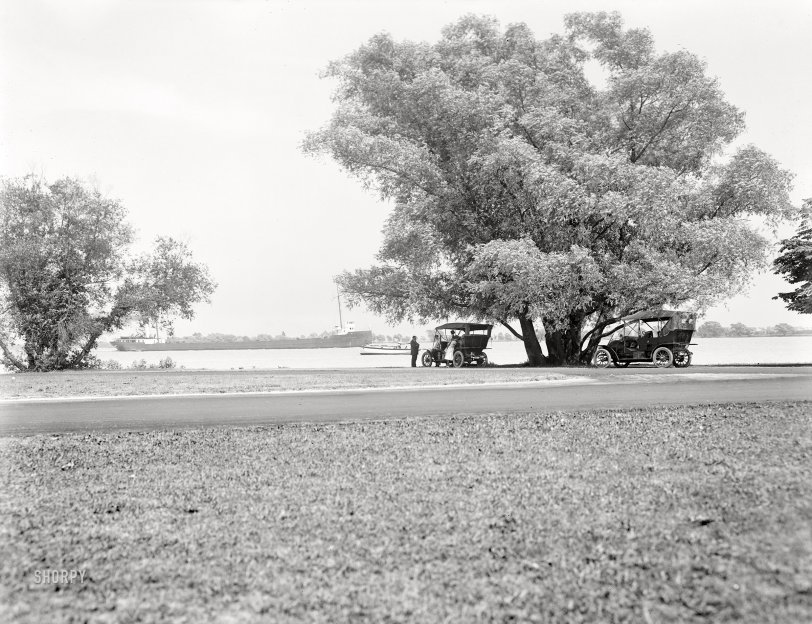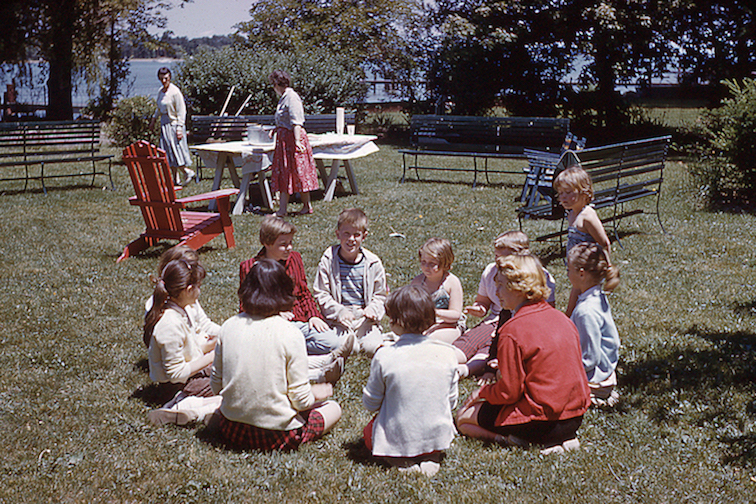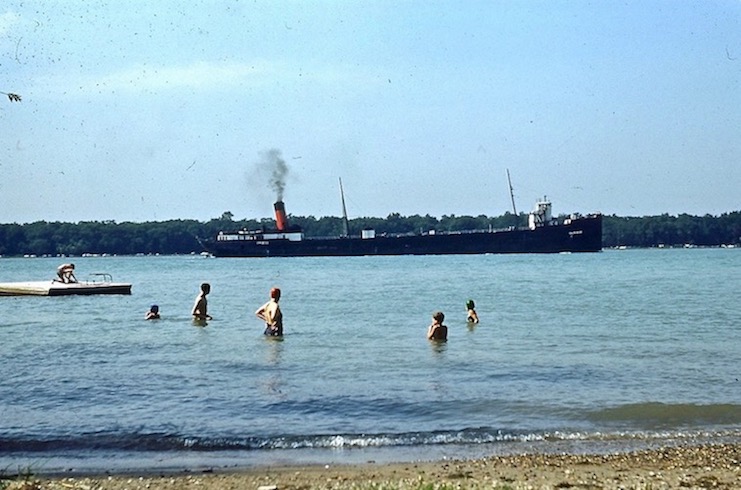


Framed or unframed, desk size to sofa size, printed by us in Arizona and Alabama since 2007. Explore now.
Shorpy is funded by you. Patreon contributors get an ad-free experience.
Learn more.

- Details, Details
- What's that building to the left of the tower?
- Coal Barges
- Bromo-Seltzer
- Inner harbor
- The Basin
- What a headache!
- Giant stepladder?
- Baldwin 62303
- Baldwin VO-1000
- Cold
- No expense spared
- Tough Guys
- Lost in Toyland
- And without gloves
- If I were a blindfolded time traveler
- Smoke Consumer Also Cooks
- Oh that stove!
- Possibly still there?
- What?!?
- $100 Reward
- Freeze Frame
- Texas Flyer wanted
- Just a Year Too Soon
- WWII -- Replacing men with women at the railroad crossing.
- Yes, Icing
- You kids drive me nuts!
- NOT An Easy Job
- I wonder
- Just add window boxes
Print Emporium
Tree Parking: 1910

The Detroit River circa 1910. "View at head of Belle Isle Park, Detroit, Mich." 8x10 inch dry plate glass negative, Detroit Publishing Company. View full size.
A modern alternative
From a little farther down the Belle Isle shoreline, 111 years later, you can watch the river traffic here:
2 Boats
In compliance with long time Great Lakes convention, both of the vessels seen, regardless of size, are known as "boats". The larger one is also commonly called an "ore boat", for the intended primary cargo of iron ore, regardless of what material it is carrying at the time.
A "ship" is a seagoing vessel that came in via the St. Lawrence Seaway from salt water, and is normally known as a "saltie".
The ore boat's name is unclear, but by letter count, a possible name could be "LACKAWANNA", which was active at that time.
[The bulk freighter in our photo is the RENSSELAER. - Dave]
View from the other side
In the 1950s our family lived on Esdras Place in Riverside (now Windsor) Ontario, Canada. At the foot of our street was a small park on the Detroit River, and this is where we had family events, and where I learned to swim. We looked north to Belle Isle Park across the river, and ship watching was part of the fun. Here are Kodachrome slides my father took circa 1955. The steamship is the Ralph Budd, which ran from 1905 to 1963.


If picture was made today
with exact composition but late model cars it would not have made sense.
Horseless carriages
Retractable cloth roof, hand-crank start, no side windows. I wonder what these car owners 111 years ago would think of cup holders, A/C, heated seats, and cruise control. Not to mention self-driving cars.
Stop crank
I read somewhere that Ford introduced a crank with a ratchet that prevented it from kicking back thus preventing injuries.
Crank and Pray
The automobiles pictured here required laborious, hazardous hand-cranking in order to start, and it was near Belle Isle Park that auto manufacturer Byron Carter was killed in a cranking mishap -- inspiring famed engineer Charles Kettering to invent and mass-produce the electric starter (introduced in 1912), surely the most significant of all automotive improvements.
























On Shorpy:
Today’s Top 5